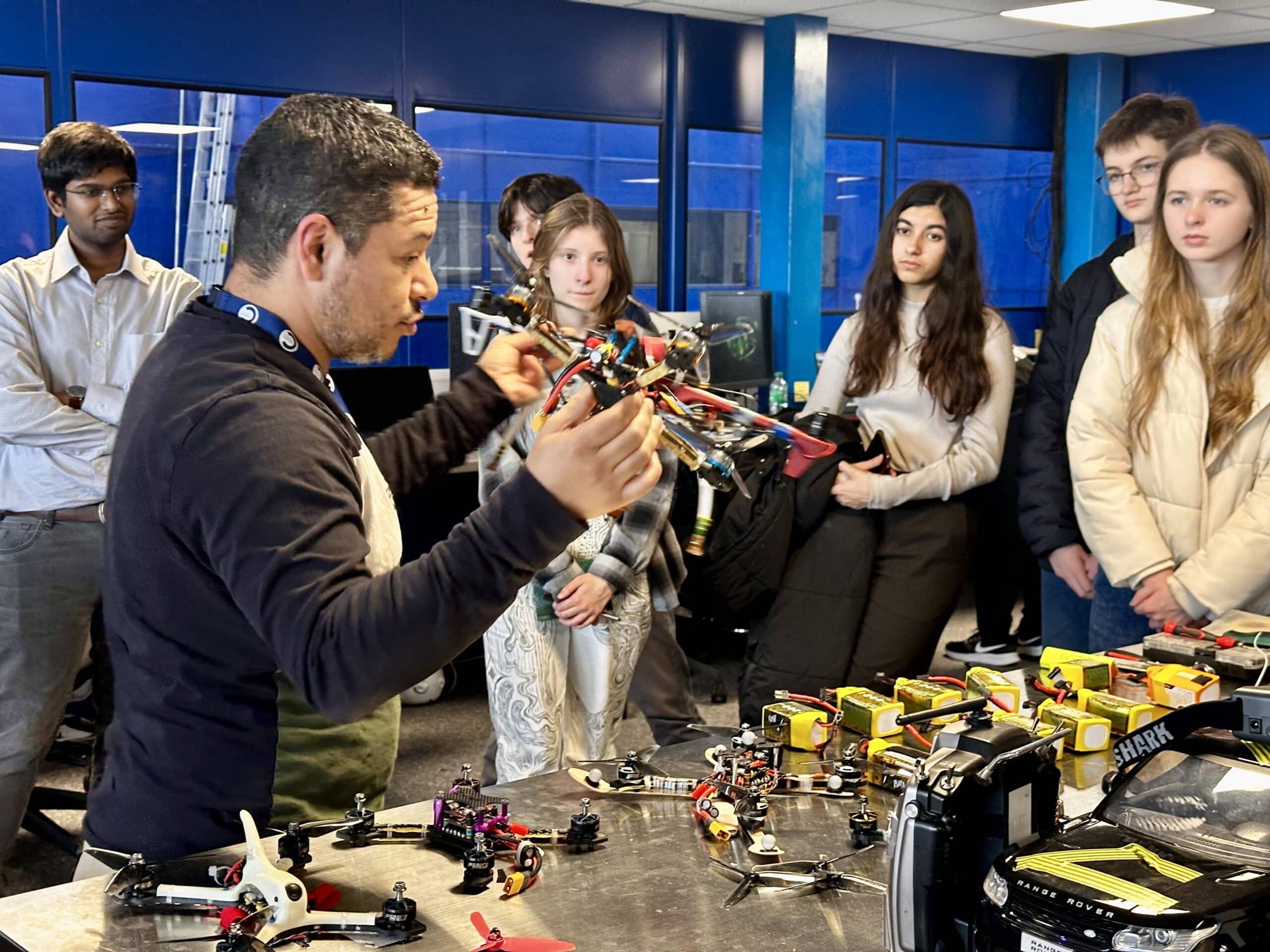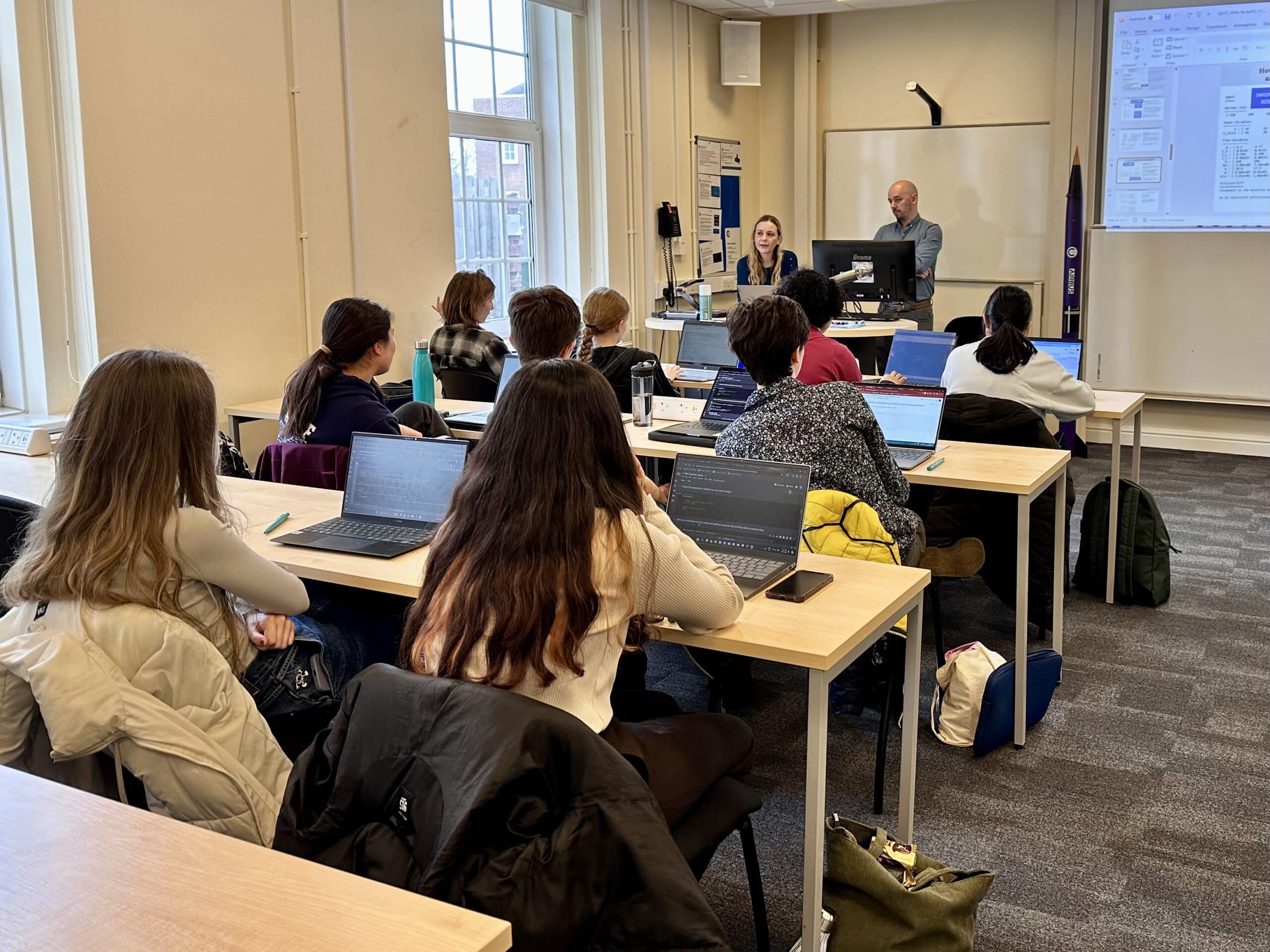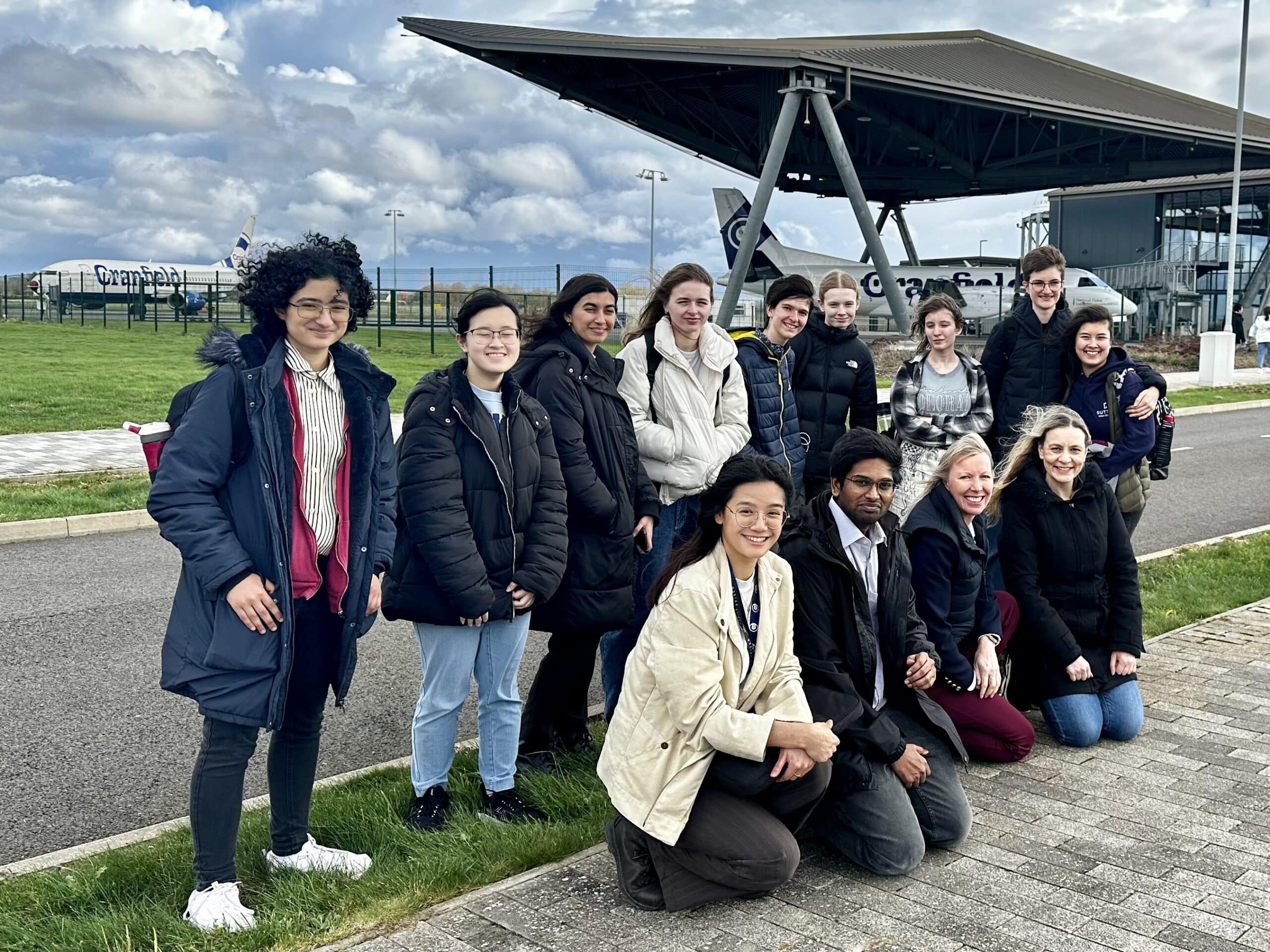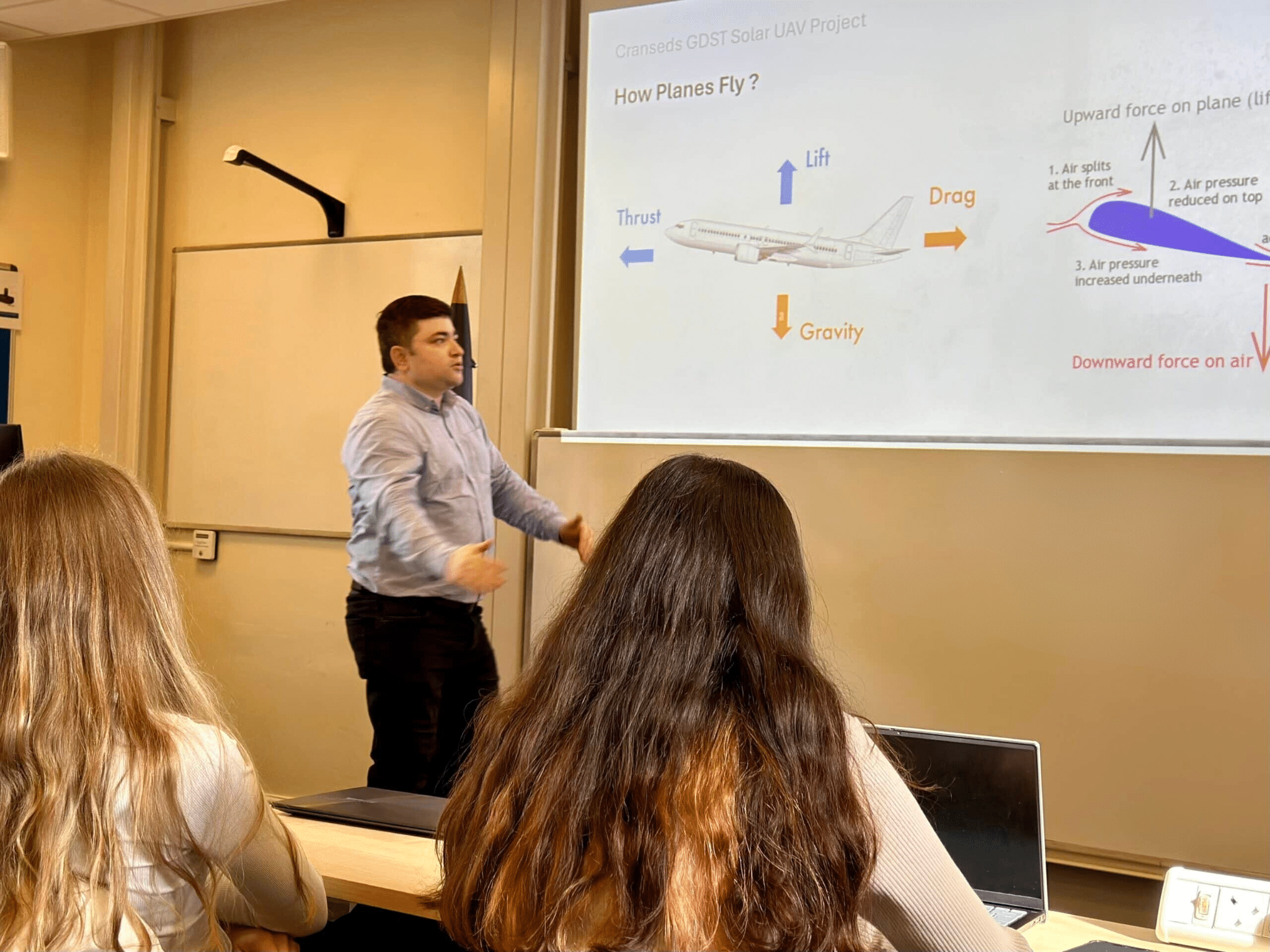Last week, Sutton High School’s GDST Space Technology Diploma students travelled to Cranfield University to attend a carefully planned industry experiential learning day hosted by the CranSEDS (Cranfield Students for the Exploration and Development of Space), led by CranSEDS engineers Syed Shane Raza Abidi, Muhammad Haad Shaikh, and Sam Mahoney.
Following the successful first stage of their 2023 Royal Society STEM partnership project focused on computational solutions for remote airborne data collection, 2024 has brought Sutton High School a new partnership opportunity with Cranfield University, to extend provisions of their existing student-generated airborne payload (onboard sensor and camera instruments). Furthering its development from surviving the atmospheric heights of high-altitude balloon deployment and velocities of rocket thrust, new ventures will tailor their imager payload toward more complex integration with a UAV (unmanned aerial vehicle) drone aircraft. Newly built by the postgraduate engineering students at Cranfield University, the drone is currently being tested to embrace impacts of sustained windspeed ahead of its next stages of solar powering and automated aerial navigation.
During recent after-school diploma sessions, Sutton High Space Tech students have engaged in first experimental tutorials using a new Python software innovation ‘GPkit’, an open-source software initially created at the Massachusetts Institute of Technology (MIT) by Dr. Warren Hoburg, now a NASA astronaut. The software has a proven track record, having been utilised in prominent projects such as the Virgin Hyperloop. Our students have been offered the rare and exceptional opportunity to investigate using ‘Geometric Programming Technique’ via the GPkit software package, to model components of the design, operation, and integrated imager payload for the newly-built UAV.
In conjunction with their visit, the students were fortunate to have the additional opportunity to visit the CranSEDS’ Space Lab and Engine Area, as well as the university’s Indoor Flight Lab, Aerospace Integration Research Centre (AIRC), and Center for Robotics and Assembly. Rishi Sunak, UK Prime Minister, recently visited the university at the start of the academic year, to inspect the university’s close link to infrastructure, collaborative projects with Rolls-Royce and Airbus, and their leading work in robotics and automation taking place in these very labs.







